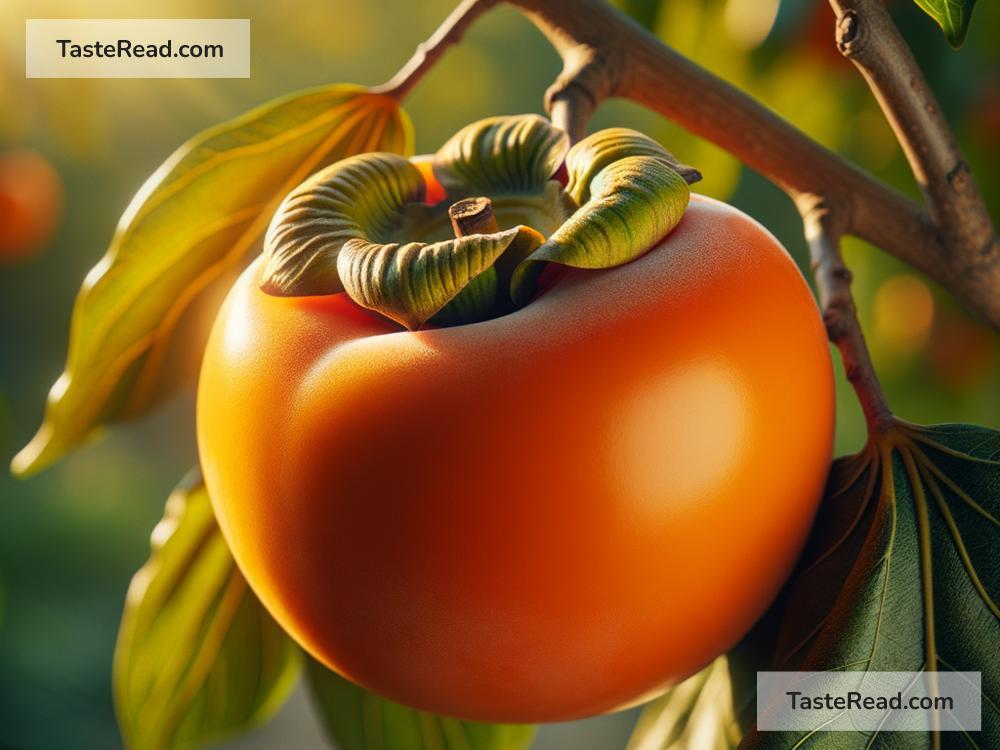Why Some Fruits Have Astringent Tastes: A Simple Explanation
Have you ever bitten into a fruit and immediately felt your mouth pucker or dry up? That’s what happens when you eat a fruit with an astringent taste. Some fruits, like persimmons or certain berries, have this sharp, drying flavor that isn’t sweet or sour but rather feels like it’s making your mouth tighten. But why do some fruits taste astringent? Let’s explore this interesting phenomenon in simple words.
What Does “Astringent” Mean?
Before we dive in, let’s clarify what “astringent” means. An astringent taste isn’t about sweetness or tartness. It’s more about how the food feels in your mouth. Foods with astringent properties create a dry, rough feeling because they interact with the proteins in your saliva and other parts of your mouth.
Imagine when you drink very strong black tea or bite into a green, unripe banana—you get a puckering sensation. That’s astringency! Astringent foods often have bitter notes, too, which can make the experience even more unique.
What Causes Astringency in Fruits?
The main reason behind the astringent taste in fruits is a group of natural chemicals called tannins. Tannins are compounds found in many plants, including fruits. They play a significant role in protecting plants from pests and diseases. But when we consume fruits with high amounts of tannins, we’re the ones who feel the effects!
Tannins bind to proteins in your mouth, especially in your saliva. When this happens, it disrupts the slipperiness and moisture that saliva provides, leaving your mouth feeling dry and tight. This is the main reason some fruits taste astringent.
Why Do Fruits Have Tannins?
You might wonder, “Why do fruits even need tannins?” There’s actually a very clever reason behind this. Plants produce tannins as a defense mechanism to protect themselves and their seeds. Here’s how it works:
-
Protection Against Animals: Astringent fruits are often unripe, and their unpleasant taste discourages animals (and humans) from eating them too early. This helps the fruit stay safe while its seeds develop.
-
Pest Control: Tannins have antibacterial and antifungal properties, which protect fruits from harmful insects, fungi, and other pests.
-
Preservation of Seeds: When a fruit is ready to be eaten and its seeds are fully mature, the tannin levels often drop. This makes the fruit sweeter and more appealing, ensuring animals will eat it and spread its seeds.
Which Fruits Are Astringent?
Many types of fruits can taste astringent, especially when they’re not ripe yet. Let’s look at some common examples:
-
Persimmons: Persimmons, especially the unripe variety, are famous for their astringent taste. If you’ve ever tried an unripe persimmon, you might remember how it made your mouth feel like sandpaper! However, when fully ripe, persimmons become sweet and soft, with much less tannin content.
-
Bananas: Green, unripe bananas have a noticeably astringent taste. That’s because they contain high levels of tannins. As they ripen, the tannins decrease, and the fruit becomes sweeter and creamier.
-
Grapes: Some types of grapes, especially in their unripe stage, are astringent. This is one reason some wines have a strong tannin taste because tannins from the grape skins and seeds are part of the wine-making process.
-
Pomegranates: The seeds (arils) of pomegranates are juicy and refreshing, but the white membrane inside the fruit is highly astringent due to tannins. If you accidentally bite into it, you’ll experience the drying sensation.
-
Berries: Certain berries, like cranberries or chokeberries, can taste notably astringent. This is why they’re often sweetened before being used in recipes.
Can Astringent Fruits Be Enjoyed?
Even though astringent fruits can feel odd at first, many people enjoy their unique flavors. The trick is knowing how to eat them:
-
Wait for Ripeness: Many astringent fruits lose their tannins and become sweeter when they ripen. For example, a ripe persimmon is deliciously sweet, while an unripe one is tough to eat.
-
Cook or Process: Cooking, fermenting, or drying fruits can reduce their tannin levels and make them more palatable. For example, cranberries taste better in sauces or juices, and green bananas are great for cooking in dishes.
-
Pair with Other Foods: Combining astringent fruits with sweeter or fatty ingredients can balance their taste. For example, pomegranates pair wonderfully with creamy yogurt, and bitter berries can be blended into smoothies.
Are Tannins Healthy?
The good news is that tannins aren’t just about taste—they also have health benefits! Tannins are antioxidants, which means they help fight free radicals in your body. Free radicals are unstable molecules that can cause harm to your cells and lead to aging and diseases. By consuming fruits with tannins, you may be giving your body a boost in fighting oxidative stress.
Tannins also have antibacterial and anti-inflammatory properties, which may contribute to better overall health.
Conclusion
The astringent taste in some fruits might not be everyone’s favorite, but there’s an interesting reason behind it: tannins. These natural compounds serve as a protective shield for fruits while acting as a deterrent to animals and pests. Over time, as fruits ripen, their tannin levels decrease, making them tastier and ready for consumption.
Even though astringent fruits can feel odd at first, they’re packed with unique flavors and health benefits. Whether you’re biting into a ripe persimmon, cooking green bananas, or sipping wine with tannins, these fruits remind us of the fascinating ways nature works. Now, the next time you taste something astringent, you’ll know exactly why your mouth feels that way!


